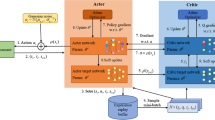Abstract
Low-power embedded technology offers a roadmap for enabling deep learning (DL) applications in mobile scenarios, like future autonomous vehicles. However, the lack of breakthrough power efficiency improvements can jeopardize the realization of truly “cognitive” mobile systems that meet real-time deadlines. This work focuses on the new generation cloud-backed mobile cognition system architecture where vehicles execute DL applications with dynamic assistance from the cloud. We unveil opportunities for power-efficient inferencing at the edge through a technique that balances inference execution across the cloud and the vehicle. This level of adaptation results in significant power efficiency improvements compared to all or nothing solutions, where inferences execute either completely on the vehicle or completely in the cloud. In addition, the cloud can have an active role in helping the vehicle to improve its DL capabilities by communicating relevant model updates, with up to 63% bandwidth savings and negligible accuracy degradation when the proposed relevance-driven federated learning technique is used. Finally, the cloud-backed mobile cognition concept is extended to the case of “flying clouds” where vehicles connect to flying drones that provide services while in flight. Although their capabilities are not on par with the stationary cloud, the flying cloud reduces services’ latency significantly and enables critical functionalities.













Similar content being viewed by others
Notes
The terms “cognitive computing” and AI are used interchangeably in this paper.
Peer-to-peer federated learning is also possible, where the aggregation is performed across the devices in a fully-distributed manner.
References
Callegaro D et al (2020) Dynamic distributed computing for infrastructure-assisted autonomous UAVs. ICC 2020:1–6
Callegaro D, Levorato M (2018) Optimal computation offloading in edge-assisted UAV systems. GLOBECOM 2018:1–6
Chen J, Ran X (2019) Deep learning with edge computing: A review. Proc IEEE 107:1655–1674
Chen Y et al (2016) DianNao family: Energy-efficient hardware accelerators for machine learning. Commun ACM 59:105–112
Cheng Y et al (2017) A survey of model compression and acceleration for deep neural networks. arXiv:1710.09282
Dolcourt J (2019) We Ran 5G Speed Tests on Verizon, AT&T, EE and More: Here’s What We Found. https://www.cnet.com/features/we-ran-5g-speed-tests-on-verizon-at-t-ee-and-more-heres-what-we-found/
Du Z et al (2015) ShiDianNao: Shifting vision processing closer to the sensor. ISCA 2015:92–104
Eliot L (2017) In-car voice commands NLP for self-driving cars. https://www.aitrends.com/ai-insider/car-voice-commands-nlp-self-driving-cars
Eshratifar AE, Pedram M (2018) Energy and performance efficient computation offloading for deep neural networks in a mobile cloud computing environment. GLSVLSI 2018:111–116
Google LLC (2020) Edge TPU. https://cloud.google.com/edge-tpu/
Han S et al (2015) Deep compression: Compressing deep neural networks with pruning, trained quantization and Huffman coding. arXiv:1510.00149
Howard A et al (2017) MobileNets: Efficient convolutional neural networks for mobile vision applications. arXiv:1704.04861
Iandola F et al (2016) SqueezeNet: AlexNet-level accuracy with 50x fewer parameters and \(<\)0.5MB model size. arXiv:1602.07360
Kang Y et al (2017) Neurosurgeon: Collaborative intelligence between the cloud and mobile edge. ASPLOS 2017:615–629
Konečný J et al (2016) Federated learning: Strategies for improving communication efficiency. arXiv:1610.05492
Lane ND, Georgiev P (2015) Can deep learning revolutionize mobile sensing? HotMobile 2015:117–122
LeCun Y et al (1998) Gradient-based learning applied to document recognition. Proc IEEE 86–11:2278–2324
Li S et al (2017) FitCNN: A cloud-assisted lightweight convolutional neural network framework for mobile devices. RTCSA 2017:1–6
Liu S et al (2017) Computer architectures for autonomous driving. IEEE Comput 50:18–25
Maas A et al (2011) Learning word vectors for sentiment analysis. ACL HLT 2011:142–150
McMahan H et al (2016) Communication-efficient learning of deep networks from decentralized data. arXiv:1602.05629
Memeti S, Pllana S (2016) Combinatorial optimization of work distribution on heterogeneous systems. ICPPW 2016:151–160
Newman D (2019) How AI is making sentiment analysis easy. https://www.forbes.com/sites/danielnewman/2019/11/22/how-ai-is-making-sentiment-analysis-easy
Ouarnoughi H et al (2019) Hierarchical platform for autonomous driving. INTESA 2019:7–12
Pakha C et al (2018) Reinventing video streaming for distributed vision analytics. HotCloud 2018:1
Redmon J, Farhadi A (2017) YOLO9000: Better, faster, stronger. CVPR 2017:6517–6525
Riley G, Henderson T (2010) The ns-3 network simulator. Springer, Berlin Heidelberg, pp 15–34
Sandler M et al (2018) MobileNetV2: Inverted residuals and linear bottlenecks. CVPR 2018:4510–4520
Sun K et al (2014) M2C: Energy efficient mobile cloud system for deep learning. INFOCOM 2014:167–168
Sze V et al (2017) Efficient processing of deep neural networks: A tutorial and survey. Proc IEEE 105:2295–2329
The Wall Street Journal (2020) Alexa has a new skill: Asking when it doesn’t know. https://www.wsj.com/articles/alexa-has-a-new-skill-asking-when-it-doesnt-know-11607732175?reflink=desktopwebshare_permalink
Verhelst M, Moons B (2017) Embedded deep neural network processing: Algorithmic and processor techniques bring deep learning to IoT and edge devices. IEEE Solid-State Circuits Mag 9:55–65
Weston J et al (2015) Towards AI-complete question answering: A set of prerequisite toy tasks. arXiv:1502.05698
Zamani H et al (2020) Analyzing and learning from user interactions for search clarification. SIGIR 2020:1181–1190
Zhang C et al (2019) Deep learning in mobile and wireless networking: A survey. IEEE Commun Surv Tutorials 21:2224–2287
Author information
Authors and Affiliations
Corresponding author
Additional information
Publisher's Note
Springer Nature remains neutral with regard to jurisdictional claims in published maps and institutional affiliations.
This research was developed with funding from the Defense Advanced Research Projects Agency (DARPA). The views, opinions and/or other findings expressed are those of the authors and should not be interpreted as representing the official views or policies of the Department of Defense or the U.S. Government. This document is approved for public release: distribution unlimited.
Rights and permissions
About this article
Cite this article
Vega, A., Buyuktosunoglu, A., Callegaro, D. et al. Cloud-backed mobile cognition. Computing 104, 461–479 (2022). https://doi.org/10.1007/s00607-021-00953-7
Received:
Accepted:
Published:
Issue Date:
DOI: https://doi.org/10.1007/s00607-021-00953-7




